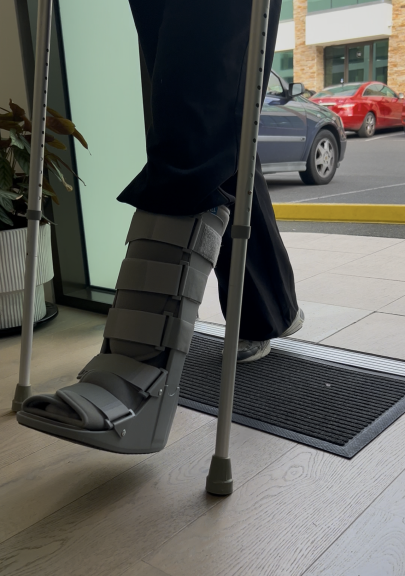Shin Splints or Medial Tibial Stress Syndrome are common leg overuse injuries in athletes and people new to running. These injuries are caused by repetitive loading on your tibia (shin bone) over time without recovery and are often seen in running and jumping sports, especially when there has been an increase in volume or intensity of training workload. If left unchecked this can lead to stress fracture.

Healthy bone is constantly adapting, recuperating, and strengthening depending on how much load is being put through it during day to day activities and how much recuperation time is available. In almost all cases the body is able to adapt to the load being put through the bones and repair any micro-trauma that has occurred in the bones. If the load, recuperation and strengthening timeframes are unbalanced the bone trauma may lead to a fracture. Fractures are caused by the continued loading allowing for the merging of multiple cracks to the point of the shin becoming painful. If the load being put through the bone is not reduced, in some scenarios, the stress fracture can continue until complete fracture occurs(1).
Symptoms of Tibial stress are often described as pain with activity such as running which subsides with rest. The pain will gradually worsen over time if no treatment or activity modification is pursued. Tenderness around the site of pain is also common and, in some cases, swelling may also be present.
Your first step in a case of “bony” shin pain is to reduce the frequency of the work outs or the distance of the workout to reduce the load and have some rest and recovery for the bone. This initial healing process will involve a period of rest to reduce the forces going through the healing bone and in some cases, crutches or a “moon boot” may be required.
Step two is to undertake a thorough physical examination with physiotherapy to look at the subtle things that may easily overload stressed bone. This can include:
- Biomechanics, how you control your leg, hip, knee with jumping, landing or running
- Discussion on training frequency, distance, load, locations
- Strength, joint and muscle flexibility and agility
Recovery is tailored to the examination results, and your goals. Recovery will also include a specific exercise program based on what we find from your examination. Your program will likely include substituting aggravating activities with more appropriate exercises such as cycling, elliptical training or swimming to maintain your current level of fitness. This programme sticks to timeframes of bony and soft tissue healing using that time to build healthier strength, endurance and control.
Once pain is under control we will make a recommendation of when to gradually return to sport and if a strength and conditioning program might be appropriate. Rehabilitation and strengthening are extremely important to reduce the likelihood of re-injury, let alone risk this developing into a stress fracture.
Your physiotherapist may also discuss with you some risk minimisation strategies while training or competing. This may include such things as:
- Proper footwear selection
- Warm up prior to exercise
- Stretch and strengthen muscles
- Cool down properly after exercise
In summary, respect rest as you respect the value of exercise and the value of specific rehabilitation with physiotherapy to outsmart those running “smarts”.
References:
- Miller, T., & Best, T. (2016). Taking a holistic approach to managing difficult stress fractures. Journal Of Orthopaedic Surgery And Research, 11(1). doi: 10.1186/s13018-016-0431-9













